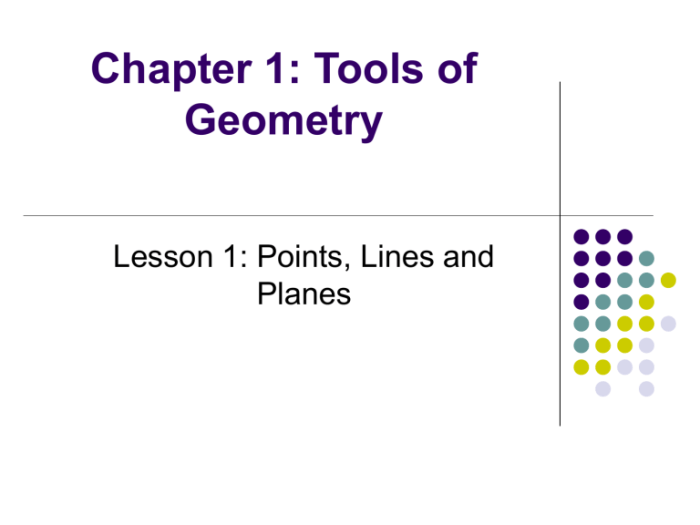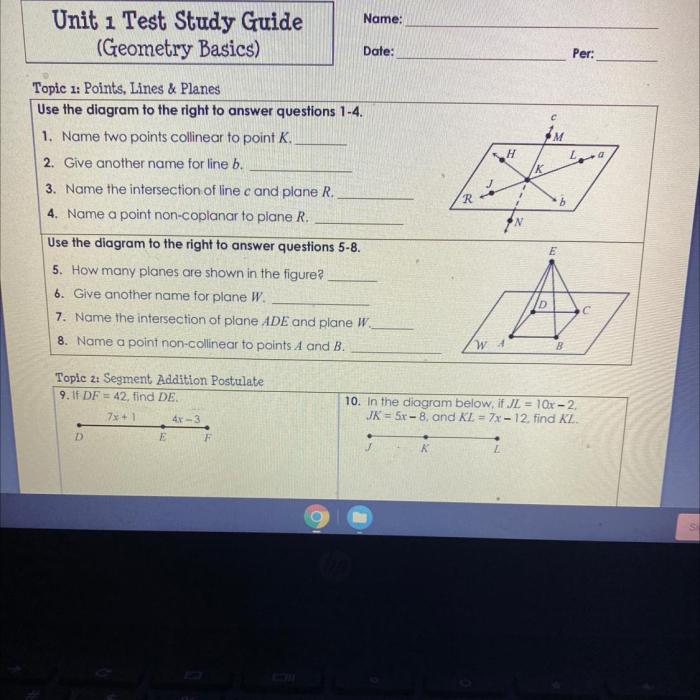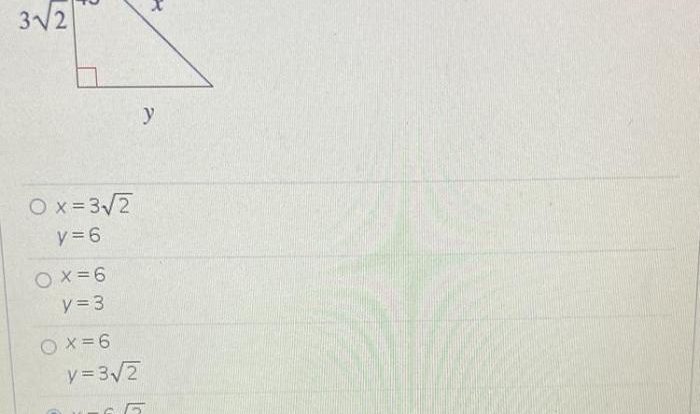Embarking on the chapter 1 tools of geometry answer key, we delve into the fundamental concepts and instruments that serve as the building blocks of geometry. This chapter provides a comprehensive exploration of the historical roots, essential tools, and foundational principles that shape this fascinating field.
Geometry, a branch of mathematics that focuses on the properties and relationships of shapes and space, has played a pivotal role throughout human history. From the construction of ancient pyramids to the design of modern skyscrapers, geometry has been instrumental in shaping our built environment and advancing scientific understanding.
Chapter 1 Tools of Geometry Overview: Chapter 1 Tools Of Geometry Answer Key

Geometry, a branch of mathematics, plays a pivotal role in understanding the spatial relationships and properties of objects. Its tools are essential for constructing, measuring, and analyzing geometric figures. The study of geometry has a rich history, dating back to ancient civilizations.
Geometry utilizes basic concepts such as points, lines, angles, and shapes. These elements are defined and manipulated according to specific rules and axioms to derive theorems and solve geometric problems.
Essential Tools for Geometric Constructions
The compass, a tool for drawing circles and arcs, consists of two adjustable legs with a sharp point at one end and a pencil or pen at the other. It allows for precise construction of circles of various radii.
Protractors are used to measure and construct angles. They typically have a semicircular or full circular scale marked with degree markings. By aligning the base of the protractor with a line and the center with the vertex of the angle, one can determine its measure.
Rulers, essential for measuring lengths and drawing straight lines, come in various units such as inches, centimeters, or millimeters. They provide accurate measurements and facilitate the construction of parallel and perpendicular lines.
Geometric Shapes and Measurements
Geometric shapes are classified based on their properties. Polygons, closed figures with straight sides, include triangles, quadrilaterals, and polygons with more than four sides.
Angles, formed by two intersecting lines, are measured in degrees. Types of angles include acute, right, obtuse, and straight angles. Lengths and areas of geometric figures are calculated using specific formulas.
Angle Relationships and Properties
Angles can be classified as complementary (summing to 90 degrees), supplementary (summing to 180 degrees), or vertical (opposite angles formed by intersecting lines). Angle addition and subtraction postulates provide rules for manipulating angles.
Triangle Properties and Theorems
Triangles, three-sided polygons, are classified as isosceles (two equal sides), equilateral (three equal sides), or scalene (no equal sides). The Pythagorean theorem, a fundamental relationship between the sides of a right triangle, has wide applications in geometry and trigonometry.
Quadrilateral Properties and Theorems, Chapter 1 tools of geometry answer key
Quadrilaterals, four-sided polygons, include parallelograms (opposite sides parallel), rectangles (parallelograms with right angles), squares (rectangles with equal sides), and trapezoids (one pair of parallel sides).
Properties of quadrilaterals involve relationships between their sides, angles, and diagonals. Midsegments and diagonals of quadrilaterals have specific properties that aid in geometric constructions and proofs.
Circle Properties and Theorems
A circle is a closed curve equidistant from a fixed point called the center. Radii are line segments connecting the center to points on the circle. Diameters are chords passing through the center, and chords are line segments connecting two points on the circle.
Arc length, sector area, and segment area are measures associated with circles. Formulas and theorems provide relationships between these measurements and the radius or diameter of the circle.
Detailed FAQs
What is the significance of geometry?
Geometry is essential for understanding the world around us, from the shapes of natural objects to the design of human-made structures. It provides a framework for describing and analyzing spatial relationships and has applications in various fields such as architecture, engineering, and art.
What are the basic tools used in geometry?
The basic tools used in geometry include the compass, protractor, and ruler. These tools are used to construct and measure geometric shapes and angles.
What are the different types of geometric shapes?
There are various types of geometric shapes, including polygons, circles, spheres, cubes, and pyramids. Polygons are two-dimensional shapes with straight sides, while circles are two-dimensional shapes with curved boundaries. Spheres, cubes, and pyramids are three-dimensional shapes.

